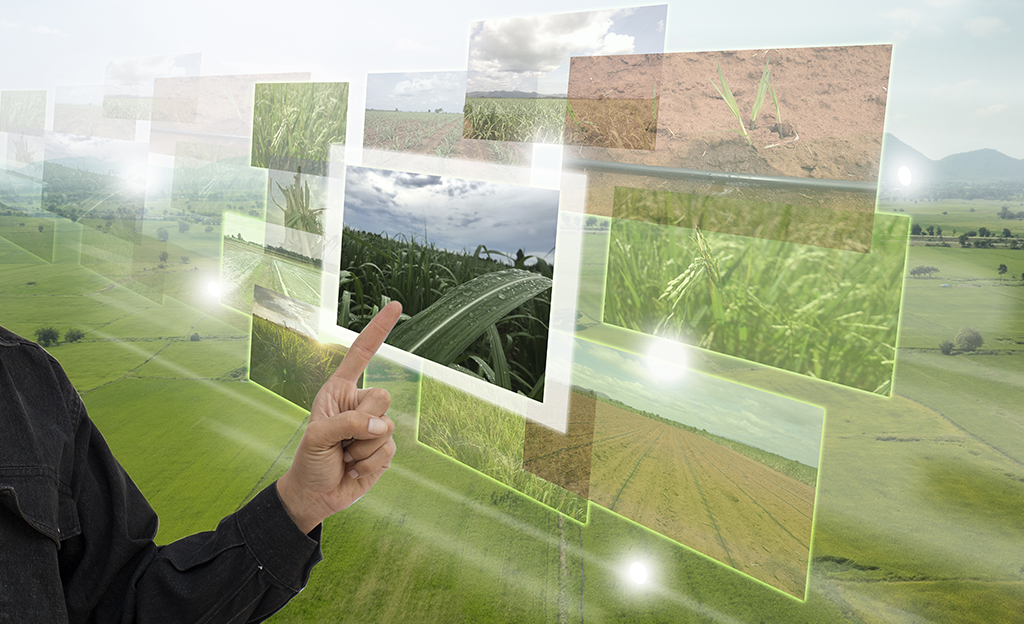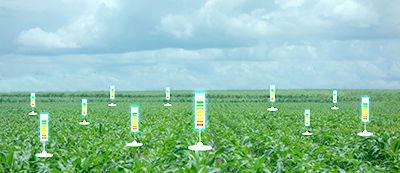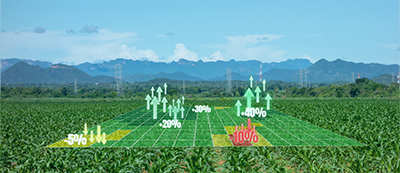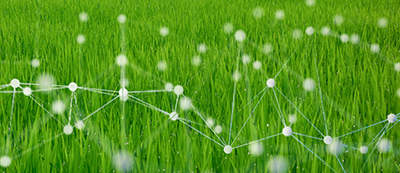How AI is Reshaping the Future of Agricultural Analytics: Our Perspective

– By Rohit Basumatary, Senior Manager, Product Development, RMSI Cropalytics
With artificial intelligence (AI) taking center stage, 2024 will witness a revolution in agricultural analytics. With AI’s potential to handle vast volumes of diverse historical data sets and transform them into relevant insights, AI is poised to empower AgriTech startups and shape the future of sustainable farming. In this blog, we will explore how AI can revolutionize the agricultural industry and enable the Agritech sector to make well-informed choices.

Data Collection and Integration
One of the key strengths of AI lies in its capability to integrate data from various resources seamlessly. Artificial Intelligence (AI) collects information from multiple sources, which includes weather stations, agricultural equipment, drone footage, and satellite imagery, to provide a comprehensive picture of the farm, eliminating the need for tedious computations and manual data collection. AgriTech startups gain a complete view of the farm, fueled by real-time soil conditions, crop health assessments, and environmental factors in turn serving in better planning, resource allocating, and targeted decision-making.

Predictive Analytics and Decision Support
AI models accurately forecast crop yields by analyzing historical data, weather patterns, and real-time conditions, and as per AgTech, they are 20% more accurate than traditional techniques (GlobalAgTechInitiative, 2023). Additionally, it may predict possible outbreaks of diseases and pests, minimizing crop losses. AI generates tailor-made suggestions for planting dates, irrigation schedules, and fertilization techniques, boosting productivity by up to 15% (MarketsandMarkets, 2023), like an informed agricultural advisor.
AI as Risk Shield
An unpredictable climate can be a farmer’s opponent. But with AI-driven forecasting and scenario planning, AgriTech startups can build a risk shield. By analyzing numerous weather datasets, AI models predict droughts, floods, and different adverse events. This forewarning allows for proactive measures like adjusting planting schedules, optimizing insurance coverage, and enforcing preventative pest management techniques, reducing weather-associated losses.

Precision and Automation
Picture this: robots monitoring each crop in the field, giving every plant precisely the water and nutrients it needs right when it desires it! AI enables precision irrigation and fertilization, delivering the right quantity of water and nutrients to each plant at the right time. This focused approach minimizes waste, potentially saving up to 30% of water resources (FAO, 2023) and drastically reducing fertilizer overflow. AI-guided insights permit focused pest and disease management techniques, decreasing reliance on wide-spectrum chemicals and shielding farm health. With AI robots, harvest, and sorting methods also can be automated, minimizing labor costs and damage to the farm produce.
Democratizing Data: Knowledge for All
AI technology is not limited to tech labs. Cloud-based platforms and democratized information are making it reachable and convenient for specialists to generate insights anywhere, anytime. Simple and intuitive dashboards make complex data accessible even to farmers with limited technical expertise, empowering them to make well-informed choices based on real-time insights eventually increasing their yield and hence their livelihoods (yield of a crop produced per unit of land in India is found to be lower in the case of most crops, as compared to other top producing countries such as China, Brazil, and the United States.)(PRS India). This opens up the platform for knowledge sharing and collaboration with farmers, researchers, and agricultural professionals, propelling the industry forward.
A Glimpse Beyond the Horizon
As AI continues its evolution, the future of AgriTech startups seems brighter. Controlled environments like vertical farms can benefit from AI-powered systems, optimizing resource management and crop tracking, potentially growing yields by 50% (AgFunderNews, 2023). AI-powered genetic data analysis also can guide breeding programs to develop disease-resistant and high-yielding crop varieties, revolutionizing genomics and breeding advancements.
Conclusion: Embracing the AI Revolution
AI isn’t just a buzzword; it’s a transformative force rewriting the agricultural landscape. From simplifying data analysis to optimizing farm tactics, AI empowers data-driven decision-making, boosting productivity and building resilience. At RMSI Cropalytics, we witness this transformation firsthand, assisting decision-makers leverage the power of AI to make informed decisions.
As we step into 2024, embracing AI isn’t simply a choice; it’s a need for the industry to stay ahead in the market and contribute to a future of sustainable and efficient agriculture. Let’s work together to use AI to its full potential in a booming agricultural success story.

You must be logged in to post a comment.